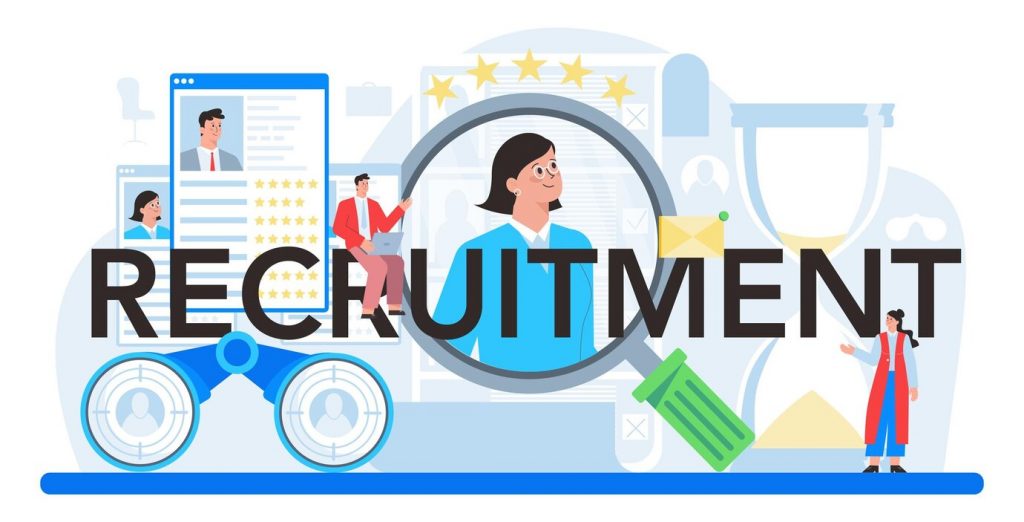Introduction
In the era of talent wars and AI-powered recruiting, mastering interview techniques has become a non-negotiable skill for hiring success. A great candidate can be lost due to poor questioning; an average one hired because of biased assumptions. In today’s hiring environment, where time-to-hire, candidate experience, and fit matter more than ever, the interview remains one of the most powerful tools—and one of the most misused.
Modern recruiters are no longer just gatekeepers; they are talent strategists. According to LinkedIn’s Global Talent Trends, 63% of hiring professionals say the interview process is too long, while 57% admit their current methods don’t accurately assess soft skills. Clearly, better interviewing is overdue.
Interview techniques aren’t just methods—they are strategic frameworks that align hiring outcomes with business goals. Whether you’re filling critical roles or scaling fast, understanding and applying the right technique could mean the difference between a high-performing hire and a costly misfire.
What Are Interview Techniques?
Interview techniques refer to structured or unstructured methods recruiters and hiring managers use to assess job candidates. These methods are designed to extract relevant information, measure role fit, and predict future performance.
There are two broad categories:
- Structured Techniques: Predefined questions and scoring criteria.
- Unstructured Techniques: Free-form conversations with minimal planning.
The best interview strategies use a blend, depending on the job role, hiring urgency, and organizational culture. In a world where bad hires cost companies up to 30% of the role’s annual salary (U.S. Department of Labor), structured interviewing isn’t just smart—it’s essential.
Also Read: Interview Intelligence: A Game-Changer in Remote and Hybrid Hiring
Why Interview Techniques Matter in Hiring Success
Effective interview techniques impact not just who you hire, but how they perform, integrate, and evolve within the company.
Key Impacts:
- Better Candidate Assessment: Well-designed interviews correlate strongly with job success. Google, for example, implemented structured behavioral interviews and saw a 25% improvement in hiring outcomes.
- Consistency and Fairness: Structured methods reduce unconscious bias. According to McKinsey, ethnically diverse companies outperform peers by 36% in profitability. Inclusive, technique-driven hiring contributes to this.
- Enhanced Candidate Experience: A survey by CareerBuilder found that 68% of candidates consider the interview experience a key factor in accepting an offer. Using modern, respectful, and relevant techniques improves employer branding.
From an employer’s lens, good techniques reduce turnover. From a candidate’s view, they create transparency and trust.
Also Read: Essential Core Components of an Interview Intelligence Platform
Types of Interview Techniques Explained
Structured Interview Techniques
Structured interviews rely on a standardized set of questions, often scored on predefined rubrics. These are ideal for roles requiring specific technical or behavioral traits.
Use When:
- Hiring at scale
- Reducing legal risk
- Ensuring objective evaluation
Pros:
- High predictive validity
- Easy to compare candidates
- Minimizes interviewer bias
Cons:
- Can feel robotic
- May miss contextual insights
Data Insight: A meta-analysis published in the Journal of Applied Psychology found structured interviews to be twice as effective as unstructured ones in predicting job performance.
Behavioral Interview Techniques
These focus on past behaviors as indicators of future actions. The STAR (Situation, Task, Action, Result) method is central here.
Use When:
- Hiring for soft skills
- Assessing leadership or teamwork
Example: “Tell me about a time you dealt with a difficult team member.”
Employer Value: Reveals decision-making, resilience, and communication styles.
Candidate Tip: Prepare stories from past roles; use the STAR format to stay clear and concise.
Situational Interview Techniques
These present hypothetical, job-relevant scenarios and ask the candidate how they’d respond.
Use When:
- Hiring for roles requiring quick thinking
- Evaluating problem-solving ability
Example: “You’re facing a missed deadline due to a vendor delay. What would you do?”
Pros:
- Tests practical reasoning
- Uncovers thought process
Cons:
- May be unrealistic if poorly designed
Study Reference: The National Association of Colleges and Employers found situational interviews increased role-specific hiring accuracy by 20%.
Also Read: Top Interview Intelligence Trends to Watch in 2025 | JobTwine
Panel Interviews vs. One-on-One
Panel Interviews: Multiple interviewers evaluate a candidate together.
- Best For: Executive hires, cross-functional roles
- Challenges: Can intimidate candidates, complex to schedule
- Advantage: Reduces single-interviewer bias
One-on-One Interviews: A single interviewer engages with the candidate.
- Best For: Entry-level or follow-ups
- Challenges: Risk of subjectivity
Data Insight: According to SHRM, panel interviews lead to more reliable evaluations but may reduce candidate comfort levels.
Modern Interview Techniques (AI/Video/Remote)
AI Interviews: Platforms like HireVue or JobTwine assess tone, pace, and content using machine learning.
- Pro: Scalable, consistent
- Con: Ethical concerns and limited nuance
Video & Asynchronous Interviews: Used for early screening
- Pro: Convenient, cost-effective
- Con: May feel impersonal
Market Insight: Gartner reports that by 2025, 80% of enterprises will use AI-based tools to support at least part of their hiring process.
JobTwine Insight: JobTwine’s smart simulations and AI-led assessments allow employers to combine behavioral and structured interviewing with analytics, improving hiring accuracy by up to 40%.
Also Read: Interview Intelligence vs. Traditional Hiring: Which Approach is Right for You?
How to Conduct an Effective Interview
A great interview is not just about asking the right questions—it’s about preparation, structure, and follow-through.
Pre-Interview Tips:
- Research the candidate’s background
- Align questions with role-specific competencies
- Prepare rubrics or evaluation forms
During the Interview:
- Start with rapport-building
- Use a mix of structured and open-ended questions
- Allow time for candidate questions
Post-Interview:
- Debrief with other interviewers (if panel)
- Score based on evidence, not intuition
- Send timely feedback
Avoid Bias Tip: Use blind scoring or anonymized notes when possible. This has shown to increase diversity outcomes by up to 25% (Harvard Business Review).
Also Read: Fostering Diversity Through AI-Powered Interview Intelligence
Best Practices for Recruiters
Recruiters are the front lines of brand and talent. Their interviewing skill is a direct driver of hire quality and time-to-fill.
Core Best Practices:
- Prepare Like a Consultant: Know the role, team, and business context.
- Standardize Without Losing Warmth: Use scripts but adapt tone.
- Listen Actively: Look beyond answers for underlying motivators.
- Document Diligently: Good notes enable consistent scoring.
- Follow-Up Promptly: Keep candidates engaged, regardless of outcome.
JobTwine Edge: JobTwine enables recruiters to run standardized interview workflows with built-in documentation, scoring guides, and collaboration features.
Also Read: AI for Diverse Hiring: How AI Enhances Workforce Diversity
Tools & Resources to Improve Interviewing
The rise of HR tech has made it easier than ever to run structured, consistent, and scalable interviews.
Top Tools:
- JobTwine: Combines interview simulations, scorecards, and AI-driven evaluation.
- Greenhouse: Interview kits and scheduling automation
- HackerRank: For tech hiring assessments
- BrightHire: Interview recording and analysis
Must-Have Resources:
- Role-based question banks
- Interview feedback forms
- DEI-aware evaluation rubrics
Modern interview strategies must integrate tools to reduce bias, improve candidate engagement, and support team collaboration.
Common Mistakes to Avoid
Despite good intentions, poor interviewing practices remain rampant. Here are the most common pitfalls:
- Asking Generic Questions: “Tell me about yourself” without follow-ups leads nowhere.
- Talking Too Much: Interviews should be 70% candidate speaking.
- No Evaluation Structure: Decisions made on gut feel rather than criteria.
- Ignoring Soft Skills: Especially dangerous in leadership or customer roles.
- Delayed Feedback Loops: Candidates left waiting often accept other offers.
Pro Tip: Debrief immediately. The longer you wait, the more distorted recall becomes.
Also Read: 5 Steps to a Smarter Hiring Process with AI-Powered Recruiting
Conclusion: The Future Belongs to Interview Masters
Interviews are evolving fast. From AI-driven platforms to asynchronous videos and simulations, the methods may change—but the goal remains the same: find the right person for the right role.
Recruiters and hiring managers who master a range of interview techniques—and apply them strategically—will consistently outperform those who rely on guesswork. The future of hiring belongs to those who combine human judgment with data, empathy with structure, and insight with innovation.
JobTwine is at the forefront of this evolution. With our AI-driven, role-specific simulations and structured interview tools, we empower teams to make better, faster, and fairer hiring decisions.
Master the interview, and you master your hiring future.
Frequently Asked Questions:
1. What are the most reliable interview techniques?
Structured and behavioral interviews have the highest predictive validity according to multiple HR studies.
2. How can I reduce bias during interviews?
Use structured rubrics, blind reviews, and collaborative scoring tools like those available on JobTwine.
3. What’s the difference between behavioral and situational interviews?
Behavioral interviews ask about past experiences, while situational ones assess hypothetical future scenarios.
4. Are AI interviews fair?
When well-designed, AI interviews can reduce human bias—but they require transparency and constant monitoring.
5. How do I prepare for a modern video interview?
Treat it like a live interview: research the company, dress professionally, and ensure a quiet, well-lit setup




